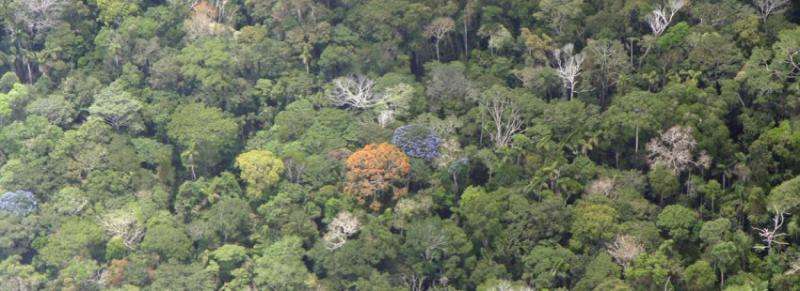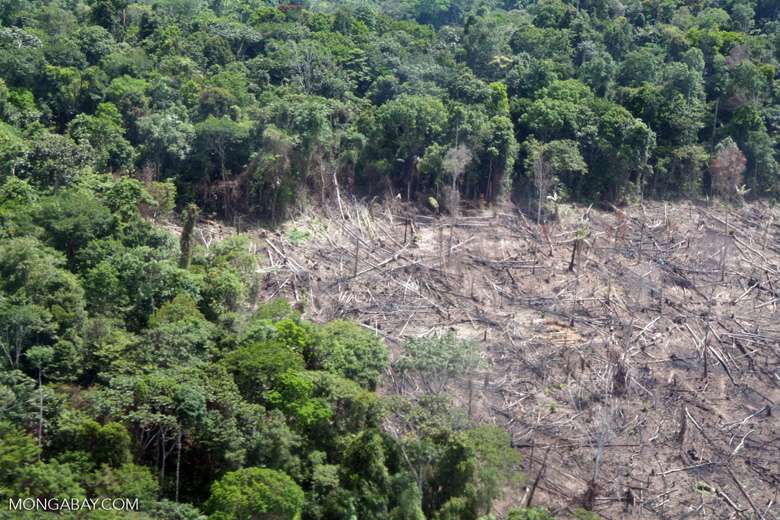Amazon rainforests could transition to savannah-like states in response to climate change, new study predicts

By the end of this century, as climate continues to warm, dry seasons could become longer and more intense in the Amazon region. Droughts could become more commonplace. But the fate of the Amazon forest—home to around 300 billion trees, and crucial to the Earth's water and carbon cycle—in this drier future remains largely uncertain.
Some studies have predicted that the Amazon could suffer from a catastrophic die-back post 2050. Others have suggested that the region would mostly remain intact. Now, scientists say that the models used in these studies are flawed. The vast Amazonia is unlikely to respond to environmental changes in the same way, researchers say in a study published Monday in the Proceedings of the National Academy of Sciences. Instead, different parts of the Amazon forest will react differently and with varying intensities.
The problem with previously used climate-change models, researchers say, is that they treat the immensely diverse Amazon rainforest as a vast swath of monotonous green. By doing so, these models fail to capture the complexity of the Amazonian ecosystem.
To avoid these pitfalls, co-author Paul Moorcroft, an ecologist at Harvard University, and his colleagues, developed and used a new model called the Ecosystem Demography Biosphere model that allows scientists to track the response of individual trees to climate change. To predict how the Amazon could change in the future, the team combined field observations and remote sensing estimates to the model.

The researchers did not find any evidence supporting previous studies that the Amazon forests would either collapse, or be unresponsive, in a warmer, drier climate in the future. Instead, their results suggest that the Amazon would show varied response to changes in the climate. And these changes will be gradual, the team found.
The model predicted, for example, that as dry seasons become longer, forests will lose more biomass. Gradually, high-biomass rainforests will transition to low-biomass dry forests and savannah-like states.
Parts of the Amazon that have a four-month long dry season could lose around 20 percent of their biomass with a two-month increase in dry season length, the model predicts. Drier forests, which have six-months long dry seasons, would respond more rapidly to changes in climate, losing around 29 percent of their biomass with a one-month increase in dry season length.
"Fire, logging, and other anthropogenic disturbances may, however, exacerbate these climate change-induced ecosystem transitions," the authors write in the paper.
The model also found that the soil type would influence how quickly the forests change. This is because the type of soil determines how much rainfall the soil holds, which in turn shapes the types of trees that grow in that soil.
For example, the model predicted that forests in soil with low clay content will be relatively unaffected by the change in climate regime. In contrast, forests in soils with high clay content are more likely to change more rapidly in response to longer dry seasons and increased water stress.
To understand, and accurately predict, how a complex and diverse forest responds to changes in climate, it is important to consider how climate and soils affect the performance of individual trees, the authors write.
"As we have shown here, models that incorporate plant-level dynamics are able to characterize observed extant patterns of variation in the structure, composition, and dynamics of Amazonian ecosystems more accurately," the authors add, "and accounting for these patterns has important implications for the sensitivity and ecological resilience of Amazon forests to different levels of climatological perturbation."
More information: Naomi M. Levine et al. Ecosystem heterogeneity determines the ecological resilience of the Amazon to climate change, Proceedings of the National Academy of Sciences (2015). DOI: 10.1073/pnas.1511344112
Journal information: Proceedings of the National Academy of Sciences
Provided by Mongaby
This story is published courtesy of The Mongabay. This article is published under the Attribution-NoDerivatives 4.0 International (CC BY-ND 4.0) Creative Commons license.





















